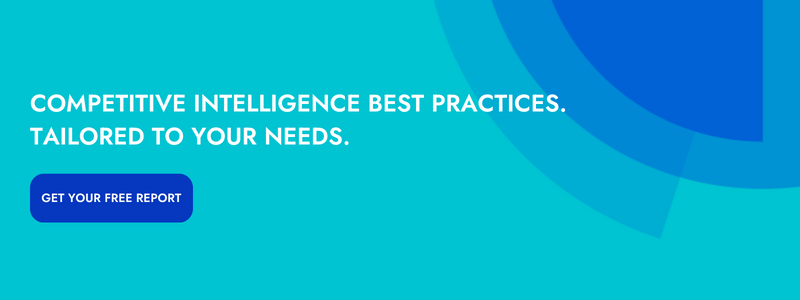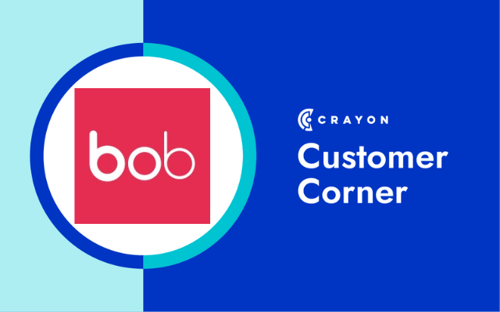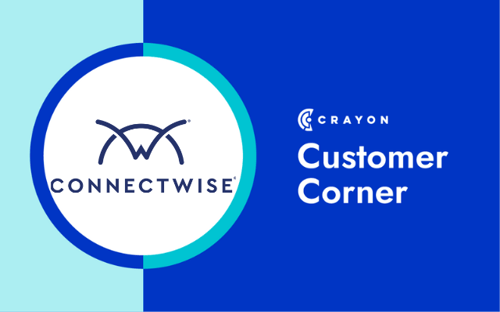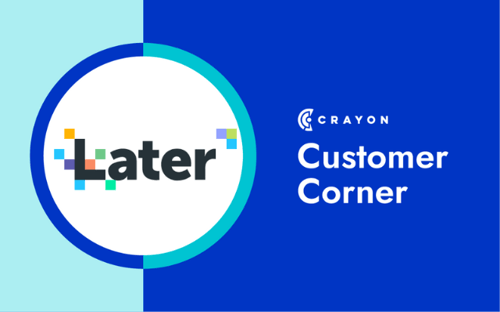To create a competitive culture is to convince your colleagues that competitive intelligence is essential—to shift the perception of CI from nice-to-have to need-to-have.
What does that mean? It means getting everyone in your organization to think more broadly and more strategically, routinely asking—what other options do our customers have?
Obsession is not the goal; knowledge is the goal. When everyone believes that understanding the business means understanding the competition, intel is used and shared more often, driving sustained growth for your program.
What we’re talking about here is change management—getting people to do things in a new way. According to McKinsey, if you want people to do things in a new way, you need to provide:
- Incentives: Give me a reason to change.
- Systems and skills: Enable me to do what you want me to do.
- Role models: Show me examples from people I respect.
To incentivize people, you need to show them the value of the new way. Existing thought leaders in your organization are the perfect role models for a healthy and productive competitive culture. And to enable people in a dynamic and digital-first world, you need a software solution that plugs into your tech stack.
So, let’s talk about role models and competitive intelligence (CI) software.
Note: The creation of a competitive culture is an ongoing process that should match the evolution of your organization’s culture. Ideally, it’s a process that you initiate in the early days of your CI program and continue to execute throughout your tenure.
Creating a competitive culture with role models
Role models lead by example. They use intel to do their jobs better, and they share intel to help others do the same. It’s on you to find these people and make their behaviors visible to their peers.
Highlight people who use intel
If you regularly communicate with the people you’re supporting, they’ll be excited to tell you about the wins that your insights help to produce. On these occasions, you should ask your colleagues if they’d be willing to share their experiences with their teammates.
Think of these occasions as testimonials: The goal is to show a group of people (e.g., your product team) that someone just like them is using competitive intelligence to their advantage.
Consider providing additional resources to help them educate their teams. For example, offer to hold a team training session and allow your advocates to share how they activated your insights. It might require a time commitment up front, but this approach pays off by exponentially recruiting advocates for your work.
Keep track of your testimonials over time. If you’re given the opportunity to present at a department or company meeting, you’ll have ample role model material to put on display.
If you’re supporting sales and/or customer success and you want to take this tactic one step further, use your call recording tool (e.g., Gong) to share snippets of your role models in action. Getting Ali to talk to her teammates about her most recent competitive victory is a good start—but showing her teammates how she won is even better. This make CI feel like a member of the team rather than an outside service and gives something back to your role models.
Highlight the people who share intel
If your company uses Slack or Microsoft Teams, you’re in luck: Creating a channel dedicated to CI is an excellent way to highlight desired behaviors. When employee-sourced field intelligence is tucked away in DMs and scattered across noisy, unfocused channels, hardly anyone sees it—which, as we know, undermines the role model effect. Centralization is the solution.
Once you’ve created your channel, an easy way to drive usage is to create keyword alerts. If anyone mentions a competitor in a random channel, that’s an opportunity to direct them to yours.
Regularly summarizing the information you crowdsource is a great way to build good habits. An email newsletter is one approach, or you could host the content on the system of your choice and share a link in Slack/Teams. Highlight your sources so they get credit for contributing. Track engagement with your newsletter by using an email extension or content management system and provide feedback on how many of their peers (or supervisors) are reading what they share.
Executive leaders make the best role models
In a recent blog post, we broke down the steps you need to take to create a business case for your CI program—one that gets approved by your CMO, CRO, or some other decision-maker.
Taking your business case to the top of the organization is beneficial not only because it ensures your alignment with overarching company priorities—thus making your work meaningful and measurable—but also because it enables you to get buy-in from the most influential people of all.
According to Prosci, a leading change management consulting firm, “active and visible executive sponsorship [is] the #1 contributor to success [when implementing change].”
If you’re serious about creating a competitive culture, you need to get your CMO talking in your Slack channel. If you’re serious about getting your CMO talking in your Slack channel, you need to create a business case that ends up on her desk. (Again, check out this blog post.)
Use your executive sponsorship to create a tiger team
Having secured executive sponsorship, you’ll have a much better chance of getting approval for the creation of a tiger team: “a specialized, cross-functional team brought together to solve or investigate a specific problem or critical issue.”
One of the benefits of a tiger team is that it takes the role model effect to a whole new level. When they agree to join, each member of the team assumes some measure of responsibility for the success of your program—talking about leading by example! And whenever one of your cross-functional partners meets a new colleague and explains what they do, they’ll mention CI, boosting the visibility and credibility of the initiative.
Creating a competitive culture with Crayon
Role models put the value of CI on full display, thus incentivizing their peers to get on board. But the job is not finished: To create a competitive culture, you need to make it easy for people to use and share intel—and that’s where Crayon comes in.
Making it easy to use intel
The two keys to getting people to use intel are relevance and accessibility. Put the stuff I care about in the places where I spend my time. Not a problem.
Real-time alerts
With Crayon’s saved search functionality, you can send your stakeholders the updates they consider particularly important—product releases, pricing changes, etc.—automatically, in real time, and directly to their preferred communications channels.
Customized reports
With Crayon’s Boards module, you can create automated reports tailored to the unique needs of specific stakeholder groups. You can, for example, keep your marketing leaders up to date on your competitors’ content campaigns, messaging changes, A/B tests, and more. Best of all, these reports can be sent straight to your stakeholders’ inboxes and embedded into Teams, Confluence, SharePoint, and anywhere else they spend their time.
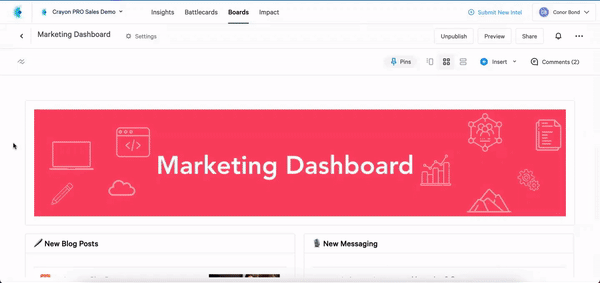
Flexible integrations
When we say “anywhere else they spend their time,” we mean anywhere. No matter your CRM, communications platform, intranet host, email provider, or sales enablement tool, the reports and battlecards you create in Crayon can be embedded in a matter of seconds.
Making it easy to share intel
The key to getting people to share intel is effortlessness. Enable me to do this from the places where I spend my time. Again—not a problem.
Slack
That’s right—Crayon's Slack integration goes both ways. So when one of your newly inspired colleagues shares a piece of intel in your dedicated CI channel, you can push it into your Crayon portal—and from there, any of your deliverables—with just a couple clicks.
Just because someone prefers email over Slack, doesn’t mean they should have to miss out on the fun. All they have to do is send their intel—along with any relevant attachments—to your CI email alias, and it will automatically populate in your portal. From there, simply attach a competitor to it and disseminate as needed.
Everywhere else
You know how you can embed reports and battlecards into any corner of your stakeholders’ tech stack? Well, whenever you do that, you’re not just giving them intel—you’re also enabling them to give you intel. With each deliverable comes a button labeled “Submit New Intel.” All your peers have to do is click that button, fill out a few fields, and boom—it’s in your portal.

A few more ideas for the road
At an absolute minimum, if you want to create a competitive culture, you have to:
- Spotlight role models (especially executive leaders), and
- Make it easy for your colleagues to use and share intel.
Those are essential. Let’s wrap up with additional tactics you can use to drive even better results.
Incorporate CI into employee onboarding
The executive leader who approved your business case—do they regularly talk to new hires about your department as part of the employee onboarding process?
If so, and their presentation doesn’t include anything about CI, ask them if they’d consider changing that. You can use McKinsey and Prosci’s research to support your request. Something as small as a mention of your Slack channel (and/or email alias) can go a long way.
At the very least, if you’re supporting sales with battlecards, make sure those are incorporated into the ramp-up process for new sellers.
Create a brand for your CI program
Role models are powerful because they show the value of CI. They lend credibility to your program, and that helps drive adoption.
Another way to boost the credibility of your program is to brand it: name, logo, color palette—hey, maybe even a quippy tagline. If this strikes you as frivolous, I encourage you to think of your program as a business, and to think of the insights and assets you deliver as products. If you want your customers to buy your products—i.e., if you want your colleagues to use intel—you have to prove that your business is legitimate. And what legitimate business doesn’t have a brand?
(Plus, if you’re delivering intel via email, keep in mind that the inboxes you’re hitting are full of messages from actual businesses. A unique brand helps you stand out.)
If you don’t have the help of a designer, Canva offers some terrific free tools, including their color palette generator and customizable logo templates.
Host a recurring lunch and learn
As your program grows and a competitive culture starts to take shape, you’ll probably find that certain people are particularly knowledgeable about certain competitors—competitor subject matter experts (SMEs), if you will. A lunch and learn—a relatively brief, casual session where someone presents and the company compensates the attendees for their lunches—is a great way to educate your colleagues and, once again, set an example.
One month, you might have a seller talk about the wins they’ve enjoyed and the losses they’ve suffered against a certain competitor, and the lessons they’ve learned along the way. The next month, you might have a product manager talk about the role that CI played in a recent launch.
To be clear, consistency and diversity are more important than frequency; a quarterly lunch and learn series that features a wide range of speakers is more impactful than a monthly series that features speakers from the same group, over and over again.
Change is hard
If it were easy, every company would have a competitive culture.
I hope this blog post has helped you think about change a bit more clearly, and I encourage you to keep learning. Prosci’s YouTube channel is an excellent resource. Check out their content and you’ll have no shortage of ideas.
And if you want to see, with your own eyes, how Crayon can help you create a competitive culture, request a demo today.

Related Blog Posts
Popular Posts
-
 The 8 Free Market Research Tools and Resources You Need to Know
The 8 Free Market Research Tools and Resources You Need to Know
-
 How to Measure Product Launch Success: 12 KPIs You Should Be Tracking
How to Measure Product Launch Success: 12 KPIs You Should Be Tracking
-
 24 Questions to Consider for Your Next SWOT Analysis
24 Questions to Consider for Your Next SWOT Analysis
-
 How to Create a Competitive Matrix (Step-by-Step Guide With Examples + Free Templates)
How to Create a Competitive Matrix (Step-by-Step Guide With Examples + Free Templates)
-
 6 Competitive Advantage Examples From the Real World
6 Competitive Advantage Examples From the Real World

